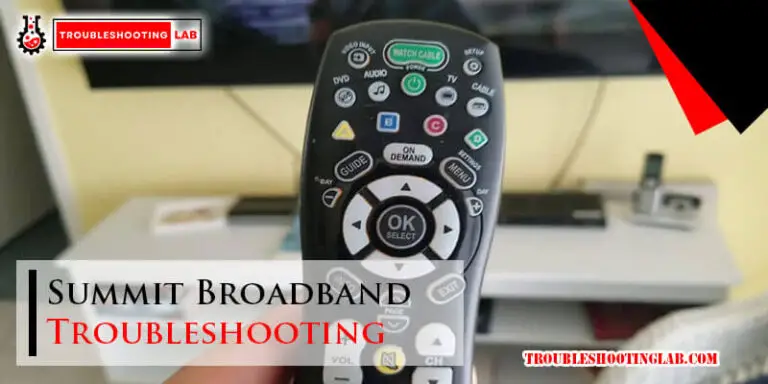Garmin Livescope Troubleshooting: Quick Fixes and Tips
Garmin Livescope is a powerful tool for fishing enthusiasts. But like any tech, it can have issues.
Troubleshooting your Garmin Livescope can be frustrating. Problems like screen issues, connectivity glitches, or unclear images can ruin your fishing trip. But don’t worry. This guide aims to help you resolve these common issues. We’ll explore simple steps to get your Livescope back on track.
Whether you’re a seasoned angler or a newbie, understanding these fixes will save you time and stress. Let’s dive in and ensure your Livescope performs at its best, so you can focus on catching fish, not dealing with tech problems.
Introduction To Garmin Livescope
Garmin Livescope is a popular fish-finding sonar technology. It provides real-time images of underwater activity. Anglers and fishing enthusiasts use it to improve their fishing experience. The system delivers clear and detailed images, making it easier to locate fish.
Key Features
Garmin Livescope offers several key features. It provides real-time sonar images. The images are highly detailed. The system uses advanced technology to deliver accurate data. It has a user-friendly interface. Anglers can easily interpret the information. This helps them make better decisions while fishing.
Common Issues
Users may encounter some common issues with Garmin Livescope. One issue is poor image quality. This can happen due to water conditions. Another issue is connection problems. The system may lose connection with the display unit. Software updates may also cause issues. These updates can sometimes lead to system errors. Regular maintenance is important to avoid these problems.

Credit: www.youtube.com
Initial Setup Problems
Setting up your Garmin Livescope for the first time can be tricky. Many users face initial setup problems. This can be frustrating. But don’t worry, most issues have simple solutions.
Connection Issues
One common problem during the initial setup is connection issues. Ensure all cables are securely connected. Loose cables often cause connectivity problems.
- Check the power cable
- Ensure the transducer cable is tight
- Verify the network cable is plugged in
If the problem persists, try resetting the device. This can sometimes resolve minor glitches.
1. Turn off the Livescope unit.
2. Disconnect all cables.
3. Reconnect the cables after a minute.
4. Turn the unit back on.
Still having issues? It might be a software problem. Let’s check the software updates.
Software Updates
Software updates are crucial for the proper functioning of your device. Outdated software can cause various problems.
- Go to the Garmin website.
- Navigate to the support section.
- Download the latest software version.
- Follow the installation instructions.
Ensure your device is connected to the internet during updates. This ensures a smooth download and installation process.
After updating, restart your Livescope unit. This helps apply the new settings.
By following these steps, you can resolve most initial setup problems. Enjoy a seamless experience with your Garmin Livescope!
Power Supply Solutions
Power supply issues can disrupt your Garmin Livescope experience. Ensuring a steady power supply is crucial. This section will guide you through simple troubleshooting steps. These steps will help solve common power-related problems. Let’s dive into some solutions.
Battery Problems
One common issue is battery problems. Check if your battery is fully charged. A low battery can cause the Livescope to malfunction. Use a voltmeter to measure the battery voltage. Ensure it meets the required voltage level. If it doesn’t, recharge or replace the battery.
Inspect the battery terminals. Clean any corrosion present. Corrosion can hinder proper power flow. Tighten loose connections as well. Secure connections ensure a stable power supply.
Power Cable Checks
Next, check the power cable. Ensure it’s in good condition. Look for any visible damage. Frayed or cut cables can disrupt power supply. Replace damaged cables immediately.
Confirm the cable connections are secure. Loose connections can cause intermittent power loss. Ensure the cable is firmly plugged into both the battery and the Livescope unit. A stable connection is key for consistent performance.
Verify the power cable specifications. Use only the recommended cable type. Incorrect cables can lead to power issues. Always follow Garmin’s guidelines.
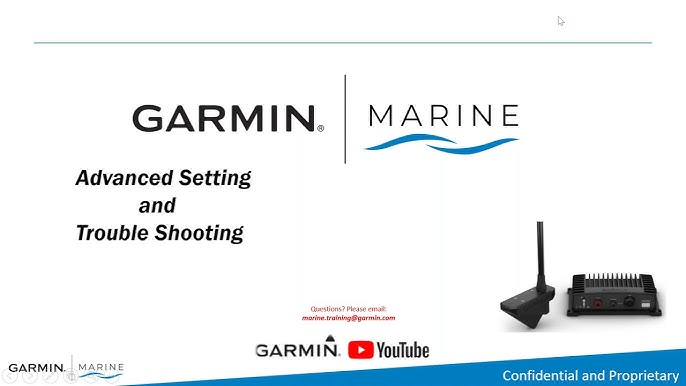
Credit: www.youtube.com
Display And Image Quality
Garmin Livescope offers advanced sonar technology. However, ensuring clear display and image quality is vital. A sharp and accurate display helps in better fish detection and underwater observation. This section provides tips for enhancing screen calibration and image clarity.
Screen Calibration
Proper screen calibration is key for optimal performance. Start by adjusting the brightness and contrast. Too much brightness can cause glare. Too little can make the screen hard to read. Balance is essential.
Next, check the color settings. Choose colors that are easy to differentiate. Some users prefer a blue palette for better visibility. Adjust the color gain to enhance weak signals. This can reveal hidden objects and fish.
Lastly, ensure your software is updated. Garmin releases updates to fix bugs and improve performance. Regular updates help maintain the best display quality.
Image Clarity Tips
To improve image clarity, start with setting the correct depth range. Adjust it to match the water depth you are fishing in. Avoid using auto settings if possible. Manual adjustments often yield better results.
Next, fine-tune the noise rejection settings. This reduces unwanted noise from the sonar. Choose a level that filters noise but retains important details. Experiment with different levels until you find the best setting.
Lastly, adjust the sensitivity. Higher sensitivity can show more details. However, too high can also show false echoes. Find a balance that shows clear images without too much clutter.
Network And Connectivity
Experiencing issues with your Garmin Livescope’s network and connectivity? This section will guide you through troubleshooting steps to ensure seamless performance. Let’s explore common problems and their solutions related to Wi-Fi and Bluetooth connectivity.
Wi-fi Connection
Wi-Fi connectivity issues often disrupt the Garmin Livescope’s performance. Ensure your device is within range of the Wi-Fi network. Check if the Wi-Fi is turned on in your device settings. Restart your router and Garmin Livescope to refresh the connection.
Another common issue is incorrect passwords. Double-check your Wi-Fi password before entering it. If you still face issues, try forgetting the network and reconnecting. This can help resolve any conflicts or errors.
Bluetooth Pairing
Bluetooth pairing can sometimes be tricky. Ensure both devices have Bluetooth enabled. Place them close to each other to improve connection strength. Clear any previous pairings from both devices to avoid conflicts.
Restart both your Garmin Livescope and the device you are pairing with. This can often resolve minor glitches. Also, update the firmware of both devices to ensure compatibility.
By following these steps, you can tackle common network and connectivity issues with your Garmin Livescope. Stay connected and enjoy your fishing experience without interruptions!
Transducer Placement
Proper transducer placement is crucial for the best performance of your Garmin Livescope. Incorrect placement can lead to inaccurate readings and frustration on the water. This section will guide you through the essentials of mounting your transducer and making depth adjustments.
Mounting Tips
Mounting your transducer correctly ensures optimal performance. Here are some essential tips:
- Choose a stable location on your boat’s hull where the water flow is smooth.
- Avoid areas near propellers or other equipment that may cause turbulence.
- Ensure the transducer is parallel to the waterline for accurate readings.
- Use the mounting hardware provided by Garmin for a secure fit.
Improper mounting can lead to distorted images or loss of signal. Take your time to find the best spot and secure it firmly.
Depth Adjustments
Setting the correct depth is essential for accurate sonar imaging. Follow these steps:
- Determine the water depth in your fishing area.
- Adjust the transducer to the appropriate depth range using the Garmin Livescope settings.
- Test the depth settings by observing the clarity of the sonar images.
- If the images are unclear, readjust the depth until the best results are achieved.
Regularly check the depth settings, especially if you change fishing locations. Accurate depth adjustments help in getting clear and precise sonar images.
Performance Optimization
Performance Optimization is key to getting the best out of your Garmin Livescope. Regular maintenance and updates can ensure your device runs smoothly. This section will help you understand the necessary steps for optimal performance.
Software Tweaks
Software tweaks can significantly improve Livescope’s performance. Adjusting settings like gain and noise reduction can enhance clarity. Set the gain to a level where the target is clearly visible. Too much gain can cause screen clutter. Reduce noise by tweaking the noise rejection setting. This helps in clearer images.
Firmware Updates
Firmware updates are crucial for optimal performance. Garmin releases updates to fix bugs and enhance features. Always check for the latest firmware version on Garmin’s website. Updating firmware can resolve performance issues. Follow the instructions carefully while updating.
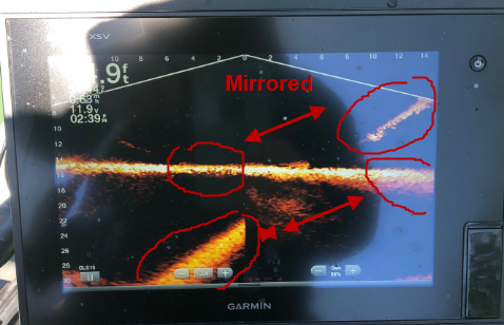
Credit: support.garmin.com
Customer Support And Resources
Garmin Livescope is a reliable product. But technical issues can arise. Knowing where to turn for help is crucial. Garmin offers excellent support and resources. This section will guide you through the available options.
Contact Information
Garmin’s customer support is a great first step. They provide phone and email support. Their team is knowledgeable and ready to assist. For phone support, dial their toll-free number. You can find this on the Garmin website. For email support, fill out the contact form on their site. Always have your product details ready. This includes the model and serial number.
Online Forums
Online forums are valuable resources. Garmin has an active community of users. These forums are full of troubleshooting tips. Users share their experiences and solutions. It’s a great place to find answers. You can browse through past posts or ask your own questions. Garmin’s own forum is a good starting point.
Third-party forums are also helpful. Websites like Reddit and Fish Finder Source have active discussions. Engaging with the community can provide quick solutions. Sometimes, other users have faced the same issue. Their insights can save you time.
Frequently Asked Questions
How Do I Reset My Garmin Livescope?
To reset your Garmin Livescope, hold the power button for 10 seconds.
Why Is My Garmin Livescope Screen Black?
Check power connections and battery. Ensure the transducer is submerged and properly connected.
How Can I Update My Garmin Livescope Software?
Connect your device to Wi-Fi, then go to Settings > System > Software Update.
Why Is My Garmin Livescope Not Connecting To My Phone?
Ensure Bluetooth is on and paired. Restart both devices and try reconnecting.
What Should I Do If My Garmin Livescope Freezes?
Restart the device. If issue persists, perform a factory reset to restore settings.
Conclusion
Solving Garmin Livescope issues can be simple with the right steps. Follow the troubleshooting tips provided to enjoy smooth fishing experiences. Regular updates and proper maintenance are crucial. Clear guidelines help resolve common problems quickly. Remember, patience and attention to detail make a difference.
Happy fishing with your Garmin Livescope!

